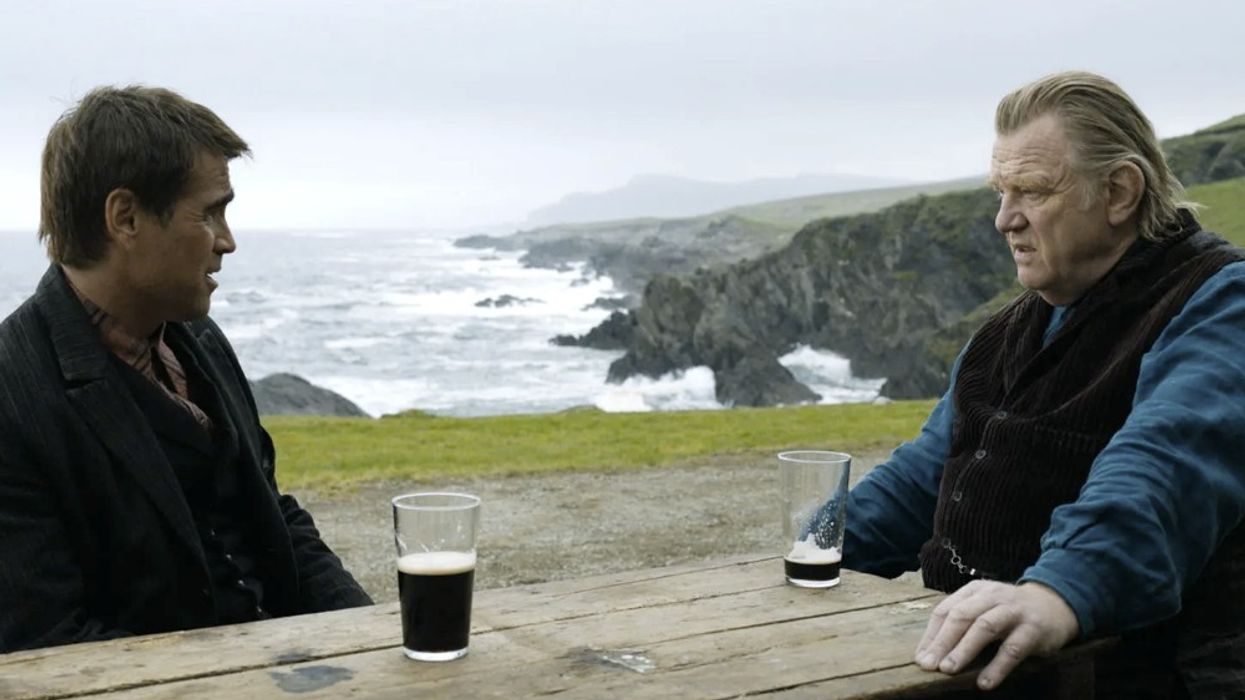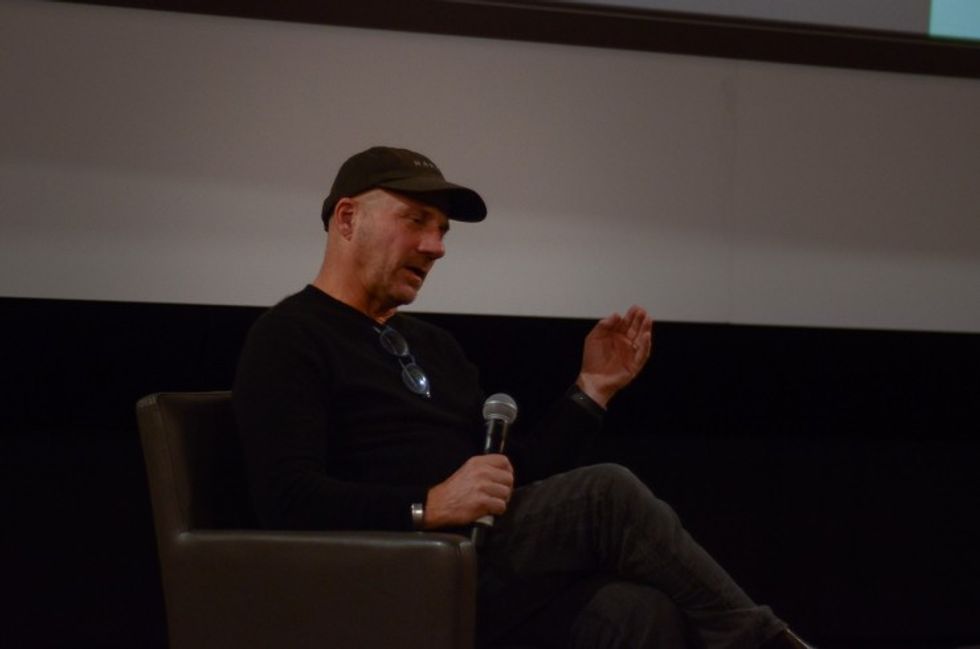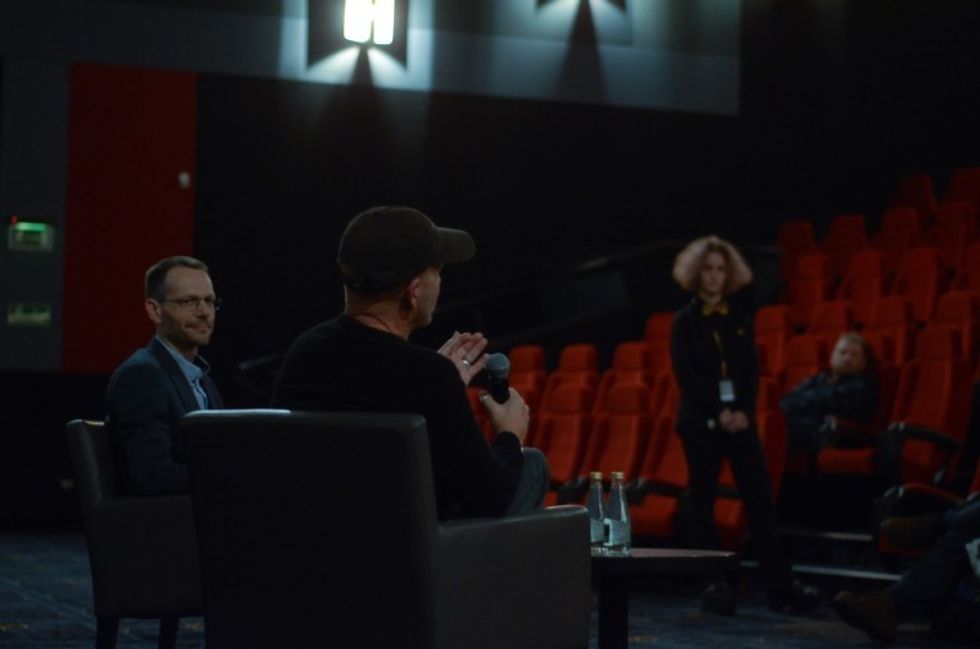DP Ben Davis Shares Key Lessons from 'The Banshees of Inisherin' with NFS
Martin McDonagh is known for movies that stir up conversations. His new film, The Banshees of Inisherin, is no different.

The director reunited Colin Farrell and Brendan Gleeson after 14 years since In Bruges.
As the logline goes, the film is about two lifelong friends finding themselves at an impasse when one abruptly ends their relationship. And let’s just say there are some alarming consequences for both of them.
Dark humor, beautiful scenery, and personal dramas. All McDonagh’s trademarks.
I had the enormous pleasure of watching The Banshees of Inisherin at the CAMERIMAGE Film Festival in Poland.
The screening was followed by a Q&A session with its cinematographer, Ben Davis, who also worked with McDonagh on Seven Psychopaths and Three Billboards Outside Ebbing, Missouri.

It took him almost an hour to answer all of the questions from the audience, and the conversation could have easily gone on longer. People were keen to discuss not only the film itself but also composition choices, lighting, and color palette.
One of the most interesting insights he shared is how they avoided showing some characters' eyes early in the film to keep the distance from their emotional state. With time we get tighter shots, and eye lights to let us see into their heart.
While this approach of gradual framing evolution is nothing new, it still made me appreciate how the director and cinematographer lead us through the story with such choices.
We then had the pleasure of talking to Davis in person. Mind that there are spoilers ahead.

No Film School: I am curious about the use of practical effects. For example, there’s a shot with a shadow of his hand with a missing finger. Was it done in the camera?
Ben Davis: I did the shadow for real. I can't remember exactly but I think we taped Colm's finger down and it's just that. Or they altered the shadow in visual effects. I can't remember. I have to be honest. What I will say about the film is this there aren't a lot of visual effects. They did a lot of object removal of modernity in certain frames where there's a modern building in the background. But Colm’s hand, the dismembered hand, is a prosthetic piece. Some blood was added, but they're the finishing touches as opposed to visual effects. It's all in-camera.
NFS: How about the shot when Pádraic, Colin Farrel’s character, breaks the mirror?
Davis: Yeah. That was in-camera.
NFS: Really? How many times have you done it?
Davis: I think that was the third take. I think we had seven breakable mirrors. And on the third take, it was just like, "Oh, we got that. That's great. Moving on."
NFS: Beautiful shot. How about the shots through the windows? Do you manipulate the reflections with a polarizer?
Davis: The reflections in window shots are difficult. The goal is to find a balance between the interior and the exterior. And a lot of it then depends on what the sky is doing behind you as well. You have to work on them. So you use some polarizers and you use specific lighting.
NFS: Are you worried about continuity when shooting?
Davis: I think there's a set of rules that we've established in film history and I think they're all there to be broken. I'll give you an example from The Banshees of Inisherin. There's a scene towards the end when Pádraic sets off in his cart to go and set fire to Colm’s house. Now I had a map I drew of the island where it said where everything is. And for me, the journey from Pádraic’s house to Colm's house is right to left. And I was very specific when we shot the shots, he's going right to left, so I shot them that way. And then and then I get to the edit at the end of it and he's going right to left in one shot and then suddenly he's going left to right. And then he goes back to going right to left.
And when Martin wasn't there in the grading suite I said to the colorist to flip it around. You know, just to see it. I would never change it without his permission of course. And we flipped it and you know what? It didn't work. It just didn't work. And in the end, no one has ever commented on that fact to me.
NFS: How difficult was working with animals on the set?
Davis: It was very easy. The animals in this film were very easy. They were really well trained. And animals play a really important part throughout the film. They're like observers in this film. They're watching the dysfunction that's going on around them. The animals are a huge part of Martin’s films. In Seven Psychopaths with the rabbits and the dogs. And then you have Three Billboards. There's the deer sequence. There's always an element of that within Martin's filmmaking.

 "'Back Home"via Mercedes Arutro
"'Back Home"via Mercedes Arutro 'Back Home'via Mercedes Arutro
'Back Home'via Mercedes Arutro 









